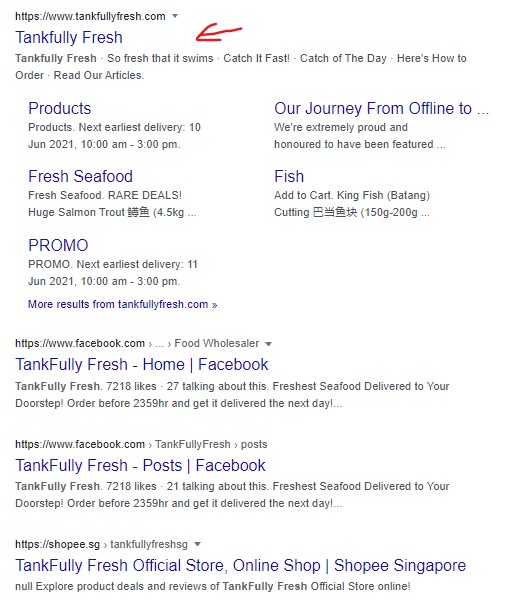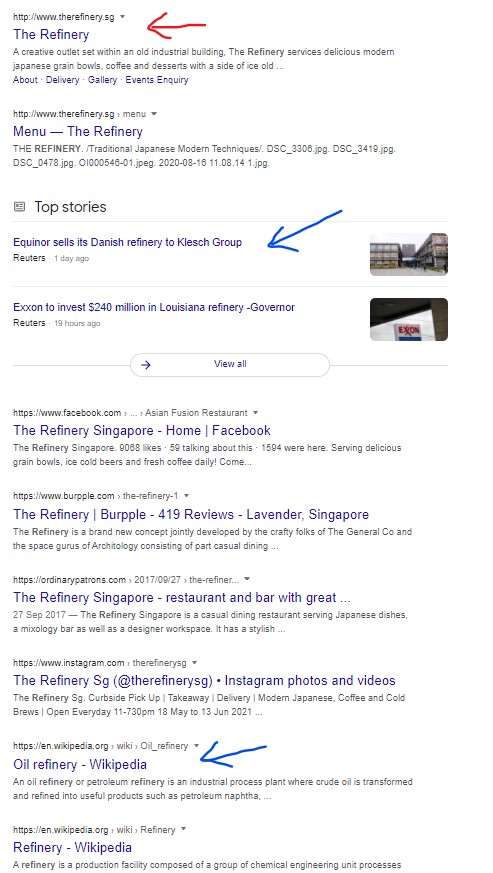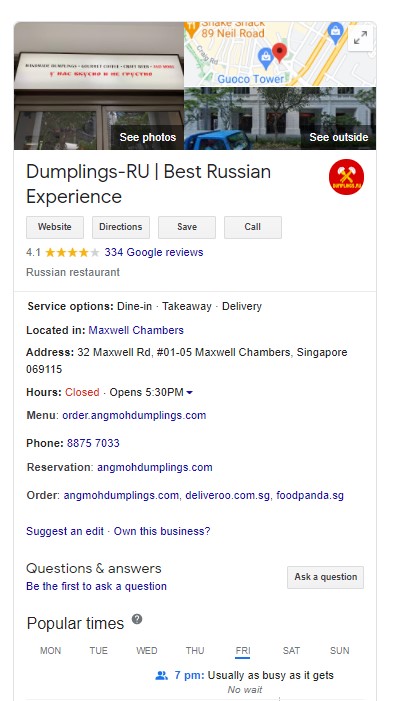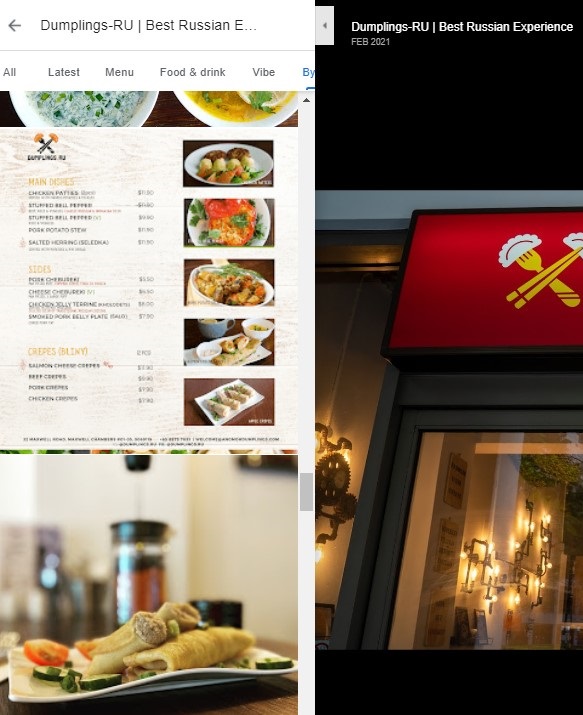
Consider this philosophical question,
“If a tree fell in the forest but there is no one to hear it, did it really fall?”
If taken literally, the answer would be a yes.
However, in the context of digital marketing, the answer to this would be a big, bold “No!”.
Let us illustrate this using 2 F&B businesses:
Business A:
– a food stall that serves decent quality food at a hawker centre
– is only known by those in the neighbourhood
– physical dine-ins and take-aways only
– does not market itself online, and has limited online visibility
Business B
– a restaurant which also serves decent quality food
– known islandwide and with the outlet being listed on the food chain’s website
– dine-ins, take-aways and food delivery options available
– high online visibility from marketing activities done by the business

Source: Pexels | Business A & B, respectively
In today’s Covid19 scenario, revenue-wise it would be hard to find Business A out-earning Business B. Even if business A has superior food quality over business B, the lack of an online presence or food delivery will limit its accessibility to consumers. Moreover, outside of a physical neighbourhood, Business A is not well known, as compared to B which is known on the online space.
With pandemic restrictions on physical dining looking to alternate between strict and relaxed, from no dining in to limited numbers to dine in, relying on physical dine-ins or takeaways solely will not be sustainable in the long run.
While having a good product or service is great, being visible online and accessible to a large audience counts for even more in the pandemic times of today.
In this last part of our C.B 2.0 game plan, we introduce 3 important ways to increase your online visibility.
1. Ensuring your brand name is visible
Having a visible brand name, at the most basic level, refers to showing up on search results when your customer searches for your brand name.
How do you ensure that happens? If you haven’t settled on a brand name, or are doing a rebranding, ensure the name you choose is unique. For instance, Wolf Burgers and Tankfully Fresh are unique names. Here, unique refers to being able to easily locate your brand when users search for your brand name.
 |
Source: Google | An example of good brand visibility (and ownership)
Also, you should have access to the profiles of your brand that are on Page 1. These include your Google My Business profile and other membership listings on various directories. Otherwise, you risk your competitors creating your business profile on your behalf and giving you problems in claiming your own brand profiles.
What if you already have an existing brand name, but is semi-generic, or are not able to rank at the top for your own brand name amongst other similar searches?
 |
An example of other results appearing for a brand name’s search
In the case pertaining one of our clients, The Refinery, they made sure to position themselves as “The Refinery” rather as “Refinery”, as the latter upon searching would show results for refineries in the oil industry.
2. Populating your online profile
To gain visibility on Google search, you would need to show that you are trying to be active online. What does this mean? This means all your online profiles should be populated to some extent with images and descriptions of your products and services, as well as your brand information. This is important as it shows that your business is here to stay, and you are not a temporary establishment or illegitimate one. Additionally, having multiple populated profiles adds to your credibility as Google’s search bots will cross-check across multiple platforms to establish your online legitimacy.
 |
 |
Source: Google My Business | An example of a well-populated profile where delivery options, product images and menu is available
Populating your online profile, beyond appeasing Google to help yourself look more credible, also works in organic ways. For a visitor clicking in on a business profile for the first time, it would definitely look more trustworthy if it the site were populated with the products that are sold or displayed.
Besides Google My Business, the platforms that a food or retail brand should be on are Facebook, Instagram, and LinkedIn.
3. Optimise your brand’s money keywords
This next step is also another crucial in optimising your online brand presence. Once you have created your online profiles and populated them, you will need to reach out to visitors who don’t know you yet. Hence, you will need to be visible by using keywords relating to your brand’s services, rather than simply being visible for your own brand name. Being visible for your own brand name is just the tip of the iceberg, and what really counts is how visible you are for your money keywords. Example, “bunk bed” for a furniture company.
Money keywords are keywords that relate to the core service or products of your brand.
How do you find money keywords for your brand? For a starter, shortlist keywords that are closely related to your product. For instance, if you are selling mentaiko burgers, “mentaiko burgers Singapore” would definitely be one keyword. “Mentaiko restaurant in Singapore” could be another keyword.
After shortlisting the obvious keywords, think about what is closely linked to your products or service that people might be looking for. Another example of keywords would be “Japanese burger Singapore” and “Mentaiko food in Singapore” which are more commonly searched for.
For a more detailed guide on how to look for ‘easier’ keywords to help your brand gain visibility faster, stay tuned for our SEO guide! Alternatively, you can engage in a SEM campaign to run Google adverts, but this will take up more of your budget.
Related: Should I Do SEO or SEM for My Website?
Parting Words
Once you know how to create visibility for your business, it will be clear on what you need to do to establish your online presence. Once you have created your business profiles, do note that you will need to update them regularly, just like how you would run your physical business. Where there was inventory work and displaying your wares, now in the online sphere this becomes keeping your online profiles updated, and your stock accurate.
Creating visibility for your brand isn’t a walk in the park, but there isn’t a better time to start the ball rolling if you haven’t done so!


